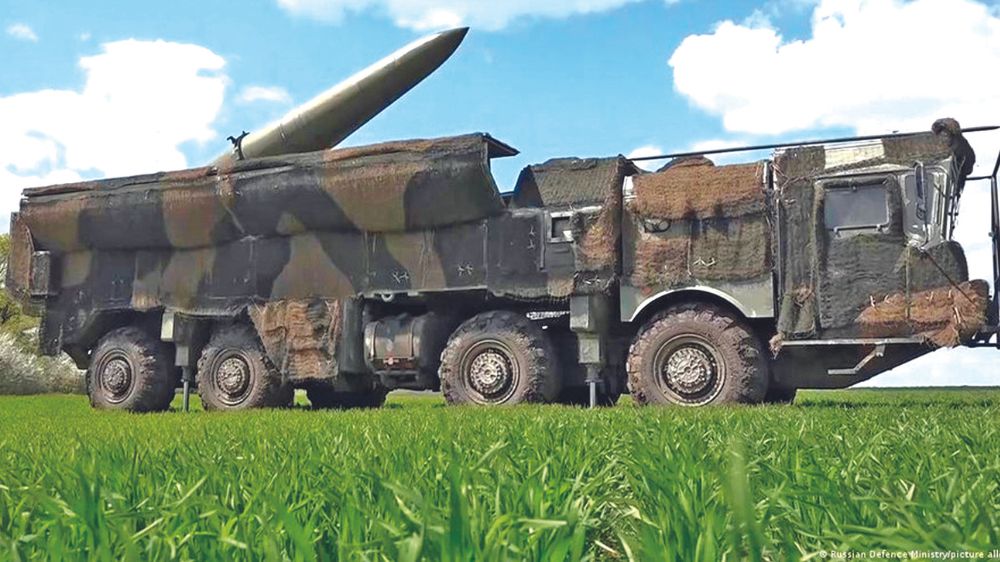Fallout of Russian tactical nukes in Belarus
Concerns over growing nuclear tensions between Russia and the US have re-emerged, with Russia recently suspending participation in the US-Russian New START agreement on nuclear arms reduction

Russian President Vladimir Putin’s nuclear threats gained momentum over the weekend when he announced that he had struck a deal with Belarusian strongman Alexander Lukashenko to station tactical nuclear weapons in Belarus. This is the first time since the mid-1990s that Moscow will base arms outside the country. In his televised statement on Saturday, Putin also said Russia will have completed the construction of a storage facility for these weapons in Belarus by July, although he did not specify when the transfer of weapons would take place.
Concerns over growing nuclear tensions between Russia and the US have re-emerged, with Russia recently suspending participation in the US-Russian New START agreement on nuclear arms reduction. Shorthand for Strategic Arms Reduction Treaty, the deal caps the number of strategic nuclear weapons each country may have, but does not specify numbers for smaller tactical nuclear weapons. While there have been no confirmations on the current number of Russia’s tactical nuclear weapons, according to a Reuters report, Washington believes Russia has around 2,000 such working tactical warheads, which is approximately 10 times more than the US. In response, the US has said there have been no indications that Russia was preparing to use nuclear weapons, but that they would continue to monitor the situation.
“We have not seen any reason to adjust our own strategic nuclear posture, nor any indications Russia is preparing to use a nuclear weapon,” the US State Department said, adding that “we remain committed to the collective defense of the NATO alliance.” Bruno Lete, senior fellow for security and defense at the German Marshall Fund of the United States, told DW that Putin’s announcement comes as no surprise to Europe and NATO. “First of all, this is part of a larger trend in the past year where Russia has stepped up its nuclear rhetoric, and NATO and Europe are prepared,” he said.
“But after Russia suspended the new Strategic Arms Reduction Treaty, worries persist that Russia could deploy nuclear weapons without any verification systems. This isn’t great for peace and security and it would be better if this treaty was still in place,” he added.
Tactical nuclear weapons are used for specific targets in the battlefield and can replace conventional warheads in common weapon systems. They cannot detonate by themselves, but require a delivery system like Iskander missiles — short-range ballistic missile systems which Russia has used to launch conventional warheads in Ukraine and Syria.
“Tactical nuclear weapons are launched purely for winning a battle, and are not designed to attack a city. They’re smaller warheads and can be up to 100 kilotons depending on the target,” William Alberque, director of the strategy, technology and arms control division at the International Institute for Strategic Studies, told DW. By comparison, strategic nuclear weapons are intercontinental and have the capacity to destroy an entire city.
“These weapons can be fired or delivered from, let’s say for example, Russian territory to hit US territory. So back in the Cold War, for a warhead to be considered strategic, they would say that it should have the capacity to be launched from Siberia to Montana. They’re more than 100 kilotons, or at least five times the size of the Hiroshima-Nagasaki bombs, and can cause a lot of damage,” Alberque said.
The Treaty on the Non-Proliferation of Nuclear Weapons (NPT) limits the spread of nuclear weapons to non-nuclear powers. In his Saturday statement, Putin argued that stationing tactical nuclear weapons in Belarus was not in breach of this agreement.
Visit news.dtnext.in to explore our interactive epaper!
Download the DT Next app for more exciting features!
Click here for iOS
Click here for Android



